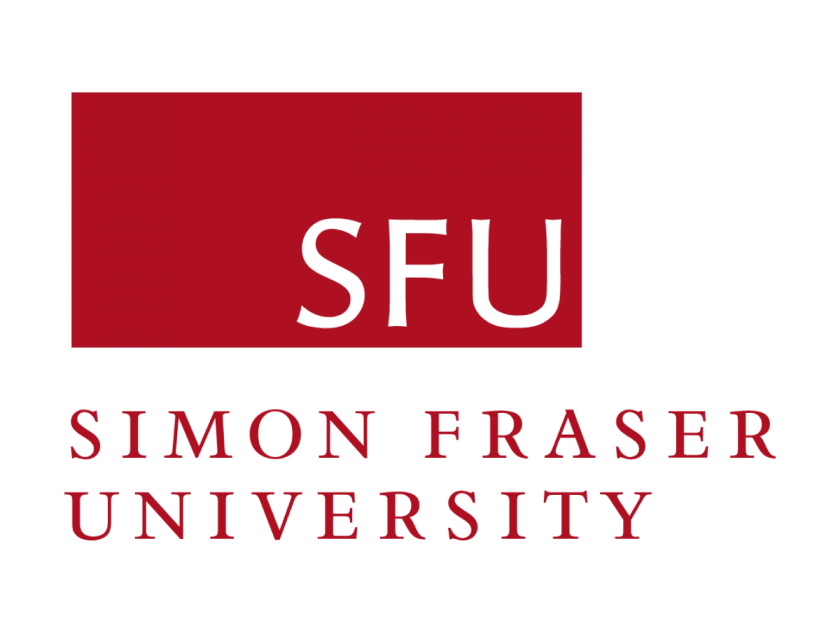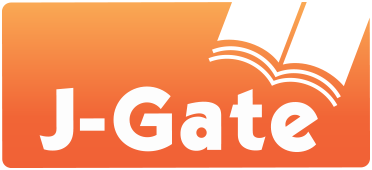Estimating University Students’ Acceptance of Technological Tools for Studying English through the UTAUT Model
Keywords:
expectancy, performance, behavioral intention, actual useAbstract
This paper is based on the results of a questionnaire survey on 289 medical students to predict their acceptance of or resistance to information and communication technology (ICT) tools for learning English through Venkatesh, Morris, Davis, and Davis's UTAUT model. The measurement scale used to estimate their behavioral intention of ICT use for learning English includes six determinants of the UTAUT, namely, performance expectancy (PE), effort expectancy (EE), social influence (SI), facilitating conditions (FC), self-efficacy (SE) and perceived anxiety (PANX) and two dependent factors, namely behavioral intention (BI) and use behavior (UB). First, the descriptive statistics indicate that the student subjects have sufficient conditions to use ICT for studying English online. Second, the exploratory factor analysis drops PANX from the hypothesized measurement model and reduces the eight original constructs to four by grouping EE and SE, PE and SI, and BI and UB. Second, the confirmatory factor analysis explains the satisfactory model fit indexes with the support of the structural equation model and locates the positive correlations among the variable constructs. After that, the tested hypotheses show that UB is influenced by BI and FC, and BI itself is affected by PE, EE, SI, and SE. Finally, the authors provide the grounded implications on what should be done to effectively increase the students' use of ICT for their learning needs in higher education.
References
Abbad, M. M. M. (2021). Using the UTAUT Model to Understand Students’ Usage of E-learning Systems in Developing Countries. Education and Information Technologies. doi:https://doi.org/10.1007/s10639-021-10573-5
Abu-Al-Aish, A. & Love, S. (2013). Factors Influencing Students’ Acceptance of M-Learning: An Investigation in Higher Education. International Review of Research in Open and Distance Learning, 14(5), 82-107. doi:10.19173/irrodl.v14i5.1631
Adas, D. & Bakir, A. (2013). Writing Difficulties and New Solutions: Blended Learning as an Approach to Improve Writing Abilities. International Journal of Humanities and Social Science, 9(3), 255-266.
Ajzen, I. & Cote, N. G. (2008). Attitudes and the Prediction of Behavior (Chapter 13). In R. P. W. D. Crano, Attitudes and Persuasion (pp. 289-311). New York: Psychology Press Editors.
Ajzen, I. (1991). The Theory of Planned Behavior. Organizational Behaviour and Human Decision Process, 50, 179-211. doi:https://doi.org/10.1016/0749-5978(91)90020-T
Alamr, A.S. (2019). Digital games and English as foreign language (EFL) learning in tertiary education in Saudi Arabia. New South Wales: University of Wollongong: Unpublished PhD Thesis.
Al-Busaidi, K. A. (2013). An Empirical Investigation Linking Learners’ Adoption of Blended Learning to Their Intention of Full E-learning. Behaviour & Information Technology, 32(11), 1168-1176. doi:https://doi.org/10.1080/0144929X.2013.774047
Alqasham, F.H.A. (2018). Virtual Social Network-mediated English Language Learning in a Saudi Tertiary EFL Context: Innovation and Agency. Massey University: Unpublished PhD Dissertation in Applied Linguistics.
Bandura, A. (1997). Self-Efficacy: The Exercise of Control. New York: W H Freeman.
Baniyassen, S. O. A . (2020). The Impact of Social Media on Improving English Learning Skills: A Case Study of UAE. United Arab Emirates University: Unpublished PhD Thesis.
Berlilana, Hariguna, T. & Nurfaizah. (2017). Understanding of Public Behavioral Intent to Use e-Government Service: An Extended of Unified Theory of Acceptance Use of Technology and Information System Quality. Procedia Computer Science 124, (pp. 585–592). Bali. doi:https://doi.org/10.1016/j.procs.2017.12.193
Blake, J. (2021). Transition From Textbook to Digital Delivery. AsiaCALL 2021: Advances in Social Science, Education and Humanities Research. 533, pp. 196-202. Vietnam: Atlantis Press SARL.
Callum, K. S. M. (2011). Influences on the Adoption of Mobile Technology by Students and Teachers. Masey University: Unpublished PhD thesis.
Challob, A.I., Bakar, N.A. & Latif, H. (2016). Collaborative Blended Learning Writing Environment: Effects on EFL Students’ Writing Apprehension and Writing Performance. English Language Teaching, 9(6), 229-241. doi:10.5539/elt.v9n6p229
Chau, K. G. (2021). The Effect of ICT on Learners’ Speaking Skills Development. International Journal of TESOL & Education, 1(1), 22–29. Retrieved from http://i-jte.org/index.php/journal/article/view/4
Chu, Q. P. (2016). Trainee Translators' Use of Website Resources: What does It Mean for Us at the University of Finance-Marketing? National Conference on Linguistic Studies and Applied Linguistics (pp. 459-470). Hue City: Hue University Publisher.
Dang, X.T. (2013). ICT Use in Foreign Language Teaching in an Innovative University in Vietnam: Current Practices and Factors Affecting ICT Use. La Trobe University: Unpublished PhD Thesis.
Davis, F. D. (1989). Perceived Usefulness, Perceived Ease of Use, and User Acceptance of Information Technology. MIS Quarterly, 13(3), 319-340. doi:doi.org/10.2307/249008
Davis, F. D., Bagozzi, R. P. & Warshaw, P. R. (1992). Extrinsic and Intrinsic Motivation to Use Computers in the Workplace. Journal of Applied Social Psychology, 22(14), 1111-1132. doi:10.1111/j.1559-1816.1992.tb00945
Grgurovic, M. (2010). Technology-enhanced Blended Language Learning in an ESL Class: A Description of a Model and an Application of the Diffusion of Innovations Theory. Iowa State University: PhD Thesis in Applied Linguistics and Technology.
Hair Jr, J. F., Black, W.C., Babin, B. J. & Anderson, R. E. (2010). Multivariate Data Analysis (7th Edition). The USA: Pearson Prentice Hall.
Ho, T. A. (2016). Xây dựng các nhiệm vụ "WEB 2.0" dành cho sinh viên Việt Nam theo học tiếng Pháp. National Conference on Linguistic Studies and Applied Linguistics (pp. 413-421). Hue City: Hue University Press.
Jaradat, M. I. R., & Banikhaled, M. (2013). Undergraduate Students’ Adoption of Website Service Quality by Applying the Unified Theory of Acceptance and Use of Technology (UTAUT) in Jordan. iJournal of Information System, 7(3), 22-29. doi:http://dx.doi.org/10.3991/ijim.v7i3.2482
Le, T. T. H. (2016). Developing Intercultural Competence with Web 2.0 Technologies in an EFL Class. National Conference on Linguistic Studies and Applied Linguistics (pp. 432-447). Hue City: Hue University Publisher.
Le, T. T. M. (2021). A Case Study of Students’ Views on Effective Online Learning. AsiaCALL Online Journal, 12(5), 24-33. Retrieved from https://asiacall.info/acoj/index.php/journal/article/view/73.
Lescevica, M., Gintersa, E. & Mazzab, R. (2013). Unified Theory of Acceptance and Use of Technology (UTAUT) for Market Analysis of FP7 CHOReOS Products. Procedia Computer Science(26), 51 – 68. doi:10.1016/j.procs.2013.12.007
Means, B., Toyama, Y., Murphy, R. & Bak, M. (2013). The Effectiveness of Online and Blended Learning: a Meta-Analysis of Empirical Literature. Teachers College Record(115), 1-47.
Miyazoe, T. & Anderson, T. (2012). Discuss, Reflect, and Collaborate: A Qualitative Analysis of Forum, Blog, and Wiki Use in an EFL Blended Learning Course. Procedia - Social and Behavioral Sciences, 34, 146-152. doi:https://doi.org/10.1016/j.sbspro.2012.02.030
Nguyen¸X. M. . (2017). Vietnamese High School English Teachers' Level of ICT Integration on Teaching according to SARM Model. TESOL Conference Proceedings 2017: Innovation and Creativity in Teaching and Learning Foreign Languages (pp. 343-355). Ho Chi Minh City: UEH Publishing House.
Nordhoff, S., Louw, T., Innamaa, S., Lehtonen, E., Beuster, A., Torrao, G., Bjorvatn, A., Kessel, T., Malin, F., Happee, R., & Merat, N. (2020). Using the UTAUT2 Model to Explain Public Acceptance of Conditionally Automated (L3) Cars: A Questionnaire Study among 9,118 Car Drivers from Eight European Countries. Transportation Research, 280-297. doi:doi.org/10.1016/j.trf.2020.07.015
Pham, V. P. H. & Vo, N. D. T. (2021). CALL in Asia During Covid-19 and Models of E-Learning. AsiaCALL 2021: Advances in Social Science, Education and Humanities Research. 533, pp. 1-10. Vietnam: Atlantis Press SARL.
Phan, T. N. T, & Huynh, D.T. N. (2021). Improving Non-Majored Students' Fluency in the English Speaking Skill in the Online Environment via Ms-Team . AsiaCALL 2021: Advances in Social Science, Education and Humanities Research. 533, pp. 97-105. Vietnam: Atlantis Press SARL.
Puentedura, R. R. (2013). SAMR: Moving from Enhancement to Transformation. Weblog post, Retrieved from http://www.hippasus.com/rrpweblog/archives/2013/05/29/SAMREnhancementToTransformation.pdf on September 24, 2021.
Puspitasari, N., Firdaus, M. B., Haris, C. A .& Setyadi, H. J. (2019). An Application of the UTAUT Model for Analysis of Adoption of Integrated License Service Information System. The 5th Information System International Conference (pp. 58-64). Indonesia: Elsevier B.V. doi:10.1016/j.procs.2019.11.099
Shachak, A. , Kuziemsky, C., & Petersen, C. (2019). Beyond TAM and UTAUT: Future Directions for HIT Implementation Research. Journal of Biomedical Informatics, 100, 1-5. doi:https://doi.org/10.1016/j.jbi.2019.103315
So, L. & Lee, C. H. (2013). A Case Study on the Effects of an L2 Writing Instructional Model for Blended Learning in Higher Education. The Turkish Online Journal of Educational Technology, 12(4), 1-10. doi:10.1142/9789814449656_0001
Taherdoost, H. (2017). A Review of Technology Acceptance and Adoption Models and Theories. 11th International Conference Interdisciplinarity in Engineering. (pp. 960-967). Tirgu-Mures, Romania: Elsevier B.V. doi:10.1016/j.promfg.2018.03.137
Tamilmani, K., Rana, N. P., Wamba, S. F., & Dwivedi, R. (2021). The Extended Unified Theory of Acceptance and Use of Technology (UTAUT2): A Systematic Literature Review and Theory Evaluation. International Journal of Information Management, 57, 1-16. doi:https://doi.org/10.1016/j.ijinfomgt.2020.102269
Tarhini, A., Hone, K. & Liu, X. (2013). Factors Affecting Students’ Acceptance of e-Learning Environments in Developing Countries: A Structural Equation Modeling Approach. International Journal of Information and Education Technology, 3(1), 54-59. doi:10.7763/IJIET.2013.V3.233
Tarhini, A., Masa'deh, R., Al-Busaidi, K., Mohammed, A. B. & Maqableh, M. (2016). Factors Influencing Students' Adoption of E-learning: A Structural Equation Modeling Approach. Journal of International Education in Business. doi:https://doi.org/10.1108/JIEB-09-2016-0032
Teh, W. (2021). Communicative Language Teaching (CLT) in The Context of Online Learning: A Literature Review. International Journal of TESOL & Education, 1(2), 65-71. Retrieved from https://i-jte.org/index.php/journal/article/view/23/11
Tran, T. M. L. & Nguyen, T. T. H. (2021). The Impacts of Technology-based Communication on EFL Students’ Writing. AsiaCALL Online Journal, 24(5), 54-76. doi:http://eoi.citefactor.org/10.11251/acoj.12.05.005
Tran, T. T. O. (2021). The Efficiency of E-teaching Activities in Teaching speaking skills for English Major Students. AsiaCALL Online Journal, 12(4), 1-8. Retrieved from https://asiacall.info/acoj/index.php/journal/article/view/51
Truong, H. N. (2021). Students' Perception Towards the Use of Moodle-based LMS in Learning Speaking Skill at Tertiary Level. AsiaCALL 2021: Advances in Social Science, Education and Humanities Research (Volume 533) (pp. 128-134). Ho Chi Minh City: Atlantis Press SARL.
Venkatesh, V., Morris, M. G., Davis, G. B., & Davis, F. D. (2003). User Acceptance of Information Technology: Toward a Unified View. Management Information Systems Quarterly, 27(3), 425-478. doi:10.19173/irrodl.v14i5.
Zuiderwijk, A., Janssen, M. & Dwivedi Y. K. (2015). Acceptance and Use Predictors of Open Data Technologies: Drawing upon the Unified Theory of Acceptance and Use of Technology. Government Information Quarterly, 32(4), 429-440. doi:https://doi.org/10.1016/j.giq.2015.09.005
Downloads
Published
Issue
Section
License
Copyright (c) 2021 Trang H. Nguyen, Phe Q. Chu

This work is licensed under a Creative Commons Attribution 4.0 International License.
The copyright of all articles published in the International Journal of TESOL & Education (ijte) remains with the Authors, i.e. Authors retain full ownership of their article. Permitted third-party reuse of the open access articles is defined by the applicable Creative Commons (CC) end-user license which is accepted by the Authors upon submission of their paper. All articles in the ijte are published under the CC BY-NC 4.0 license, meaning that end users can freely share an article (i.e. copy and redistribute the material in any medium or format) and adapt it (i.e. remix, transform and build upon the material) on the condition that proper attribution is given (i.e. appropriate credit, a link to the applicable license and an indication if any changes were made; all in such a way that does not suggest that the licensor endorses the user or the use) and the material is only used for non-commercial purposes.
Authors retain copyright and grant the journal the right of first publication with the work simultaneously licensed under a Creative Commons Attribution 4.0 International License that allows others to share the work with an acknowledgment of the work's authorship and initial publication in this journal.
Authors are able to enter into separate, additional contractual arrangements for the non-exclusive distribution of the journal's published version of the work (e.g., post it to an institutional repository, in a journal or publish it in a book), with an acknowledgment of its initial publication in this journal.











